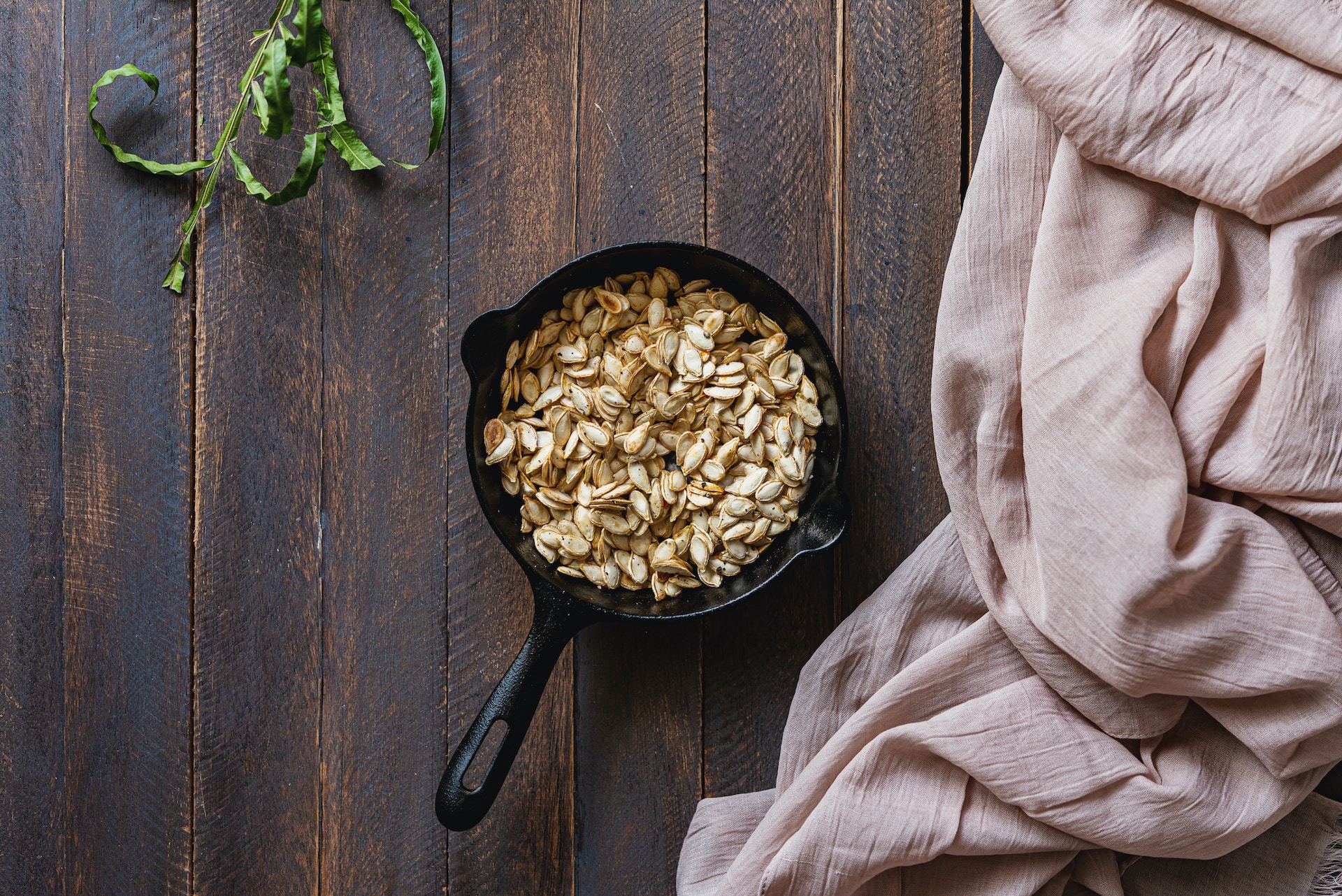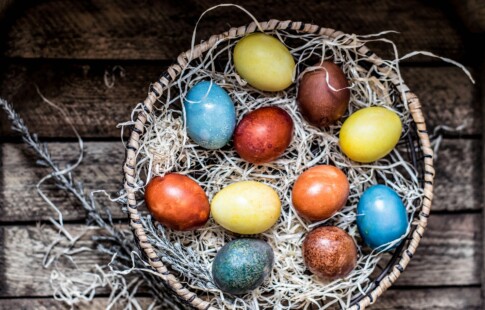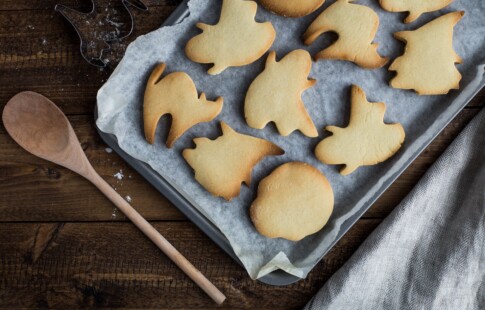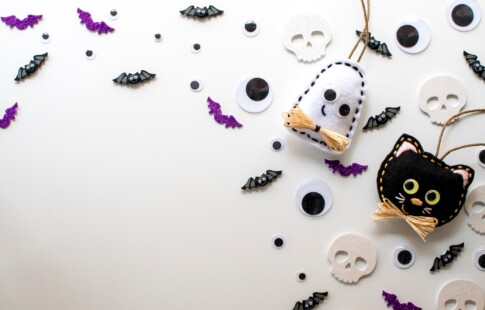
How to Toast Pumpkin Seeds in a Pan
We are reader-supported. When you buy through links on our site, we may earn affiliate commission.
Autumn’s arrival heralds the return of several comfort foods and family favorites that crop up this time of year. Apple pies, warming soups, and slow-cooker favorites like pot roasts make their long-awaited return. Many people also look forward to toasting pumpkin seeds dug out of their Halloween jack-o’-lanterns. The traditional preparation method involves baking them in the oven, but a more eco-friendly alternative exists. Here’s how to toast pumpkin seeds in a pan.
Why Choose Stovetop Over the Oven?
There are a few good reasons to use the stovetop instead of the oven. Ovens use more energy than cooking in a pan — standard models can use up to 3,000 watts of power. Two hours of stovetop cooking can cost you about 36 cents for electricity, but the same amount of time in the oven will run about 54 cents. The pan method wins hands down for those concerned about the cost to the planet due to increased energy use.
Prepare Your Pumpkin Seeds
Here’s how to toast pumpkin seeds in a pan so you end up with that crisp, nutty flavor you know and love.
Gather Your Ingredients
All you need are a couple of ingredients to make your toasted pumpkin seeds:
- 1 cup pumpkin seeds
- Dash of seasoning, such as salt and pepper, onion and garlic powder, or any other flavors you prefer
This recipe can be doubled if you have a big clan or carved many pumpkins this year. They are great for sharing with friends during upcoming Halloween festivities or serving as appetizers before Thanksgiving dinner.
Clean Your Seeds
Thoroughly rinse the pumpkin seeds after scooping them out of your pumpkin. Use your fingers to remove all the pulp. Then drain them in a colander, ensuring no residue remains. Spread them in an even layer on a cookie sheet and let them dry overnight. This provides a nice and crisp finished product.
Toast Those Pepitas
Heat a heavy-bottomed skillet over medium heat. Cast iron is especially good since it is naturally nonstick without the use of harmful chemicals. Add pumpkin seeds. Stir and shake them for about 10 minutes to prevent them from burning as they toast up. You’ll know they are done when they turn golden brown and begin to pop open, releasing that delectable aroma. It may take more or less time depending on the size of your seeds, so judge accordingly.
Sprinkle With Your Favorite Seasonings
Sprinkle hot pumpkin seeds with your seasoning of choice and toss to coat. Simple salt and pepper is a classic combination, but you can experiment with various others to suit your taste. Consider chili powder, garlic powder, or cinnamon. However, there are really no constraints when it comes to seasonings. You can even mix up unique creations, such as:
- Cheesy Italian: Olive oil, Parmesan cheese, Italian seasoning
- Curried: Coconut oil, curry powder, raisins
- Pumpkin pie: Sugar, pumpkin pie spice
Store Them Right
Cool your pumpkin seeds thoroughly before eating or storing them. Keep them in an airtight container at room temperature for up to three months. You can also refrigerate them for up to six months or even freeze them for a year, although they’ll probably be long gone by then. However, you can certainly enjoy your toasted seeds well into summer if you wish.
Get Creative in the Kitchen
Knowing how to make pumpkin seeds in a pan is a good skill to have. They make delicious snacks, but you can do so much more with them. They make great salad toppers and can also be blended into dips, sauces, and smoothies. Add them to a bowl of pasta, blend them into a butter, or add them to oatmeal. They make a good addition to trail mix or stirred into hummus.
Their flavor profile lends itself well to various dishes, and you can experiment in the kitchen to create a unique recipe all your own.
Pumpkin Seed Nutritional Information
Pumpkin seeds are more than just delicious — they are also a good choice for your health. Every quarter cup yields the following:
- Total fat: 16 grams
- Saturated fat: 3 grams
- Trans fat: 0
- Cholesterol: 0
- Sodium: 2 milligrams
- Potassium: 0
- Carbohydrates: 3 grams
- Dietary fiber: 2 grams
- Sugar: 0
- Protein: 10 grams
Pumpkin seeds are a rich source of protein, unsaturated fatty acids, vitamins, and minerals that reduce risk factors for chronic diseases. They are rich in antioxidants, which protect cells from damage and reduce inflammation in the body. They are also a great source of dietary fiber. All this helps you maintain good bladder, bowel, liver, and joint function.
That quarter cup of pumpkin seeds contains 180 calories, so indulge accordingly. They also provide you with 10 grams of protein.
Toasting vs. Roasting
Many people are familiar with the standard method of making pumpkin seeds, which is roasting them in the oven. What’s the difference? The seeds will taste the same, but using the oven method will take longer and is the less eco-friendly choice.
However, old traditions die hard. Here’s how to roast pumpkin seeds in the oven.
Prepare the seeds as you would for toasting them in a pan, ensuring they are thoroughly cleaned, rinsed, and dried before baking. Then, follow these steps:
- Toss the seeds with olive oil or butter and seasonings of choice
- Arrange them on a baking sheet in a single layer
- Bake until golden brown, about 45 minutes
After trying both methods, you may decide toasting pumpkin seeds in a pan is better. It takes much less time and is better for the environment. Every little thing you do is a big help.
Learn How to Toast Pumpkin Seeds in a Pan
Once you know how to toast pumpkin seeds in a pan, you will likely find it becomes your preferred method. It’s quick and easy, and the results are delicious. You will save time over the oven method, which is a plus for the environment. Get ready to toast up a batch — or several batches — this season. Experiment with seasonings until you find your go-to favorite, and be sure to share them with friends and family.
Share on
Like what you read? Join other Environment.co readers!
Get the latest updates on our planet by subscribing to the Environment.co newsletter!
About the author
Rachel Lark
Rachel serves as the Assistant Editor of Environment.co. A true foodie and activist at heart, she loves covering topics ranging from veganism to off grid living.





